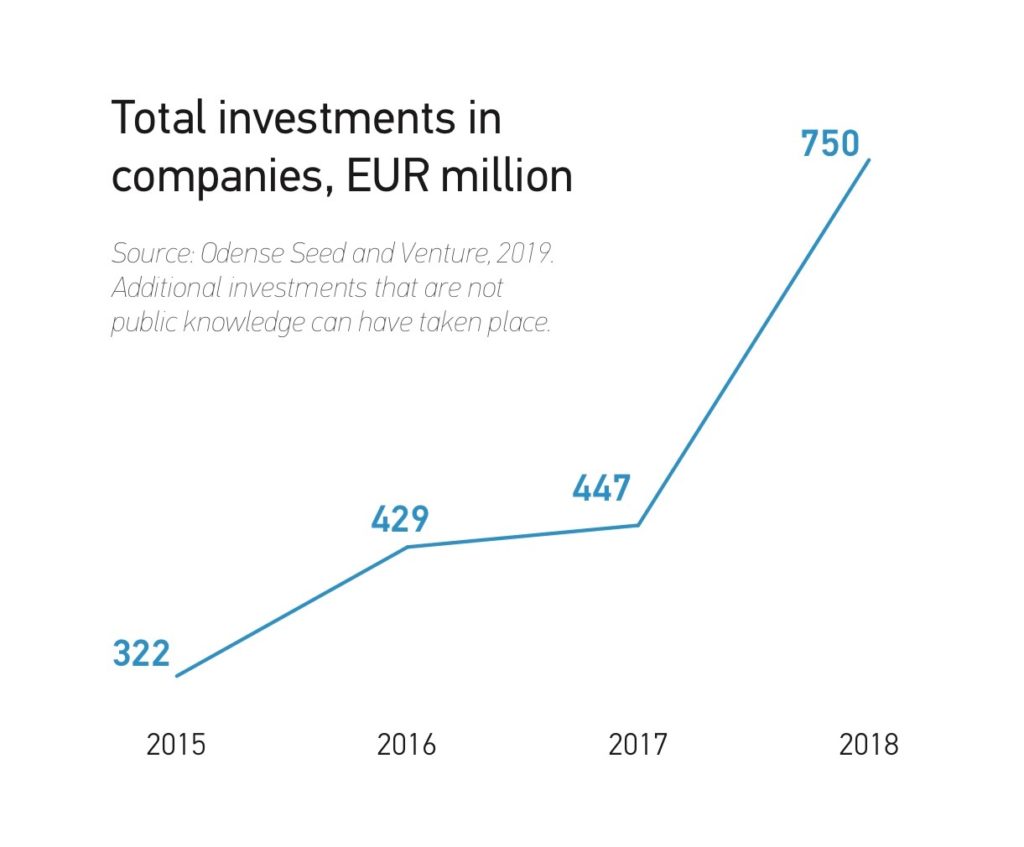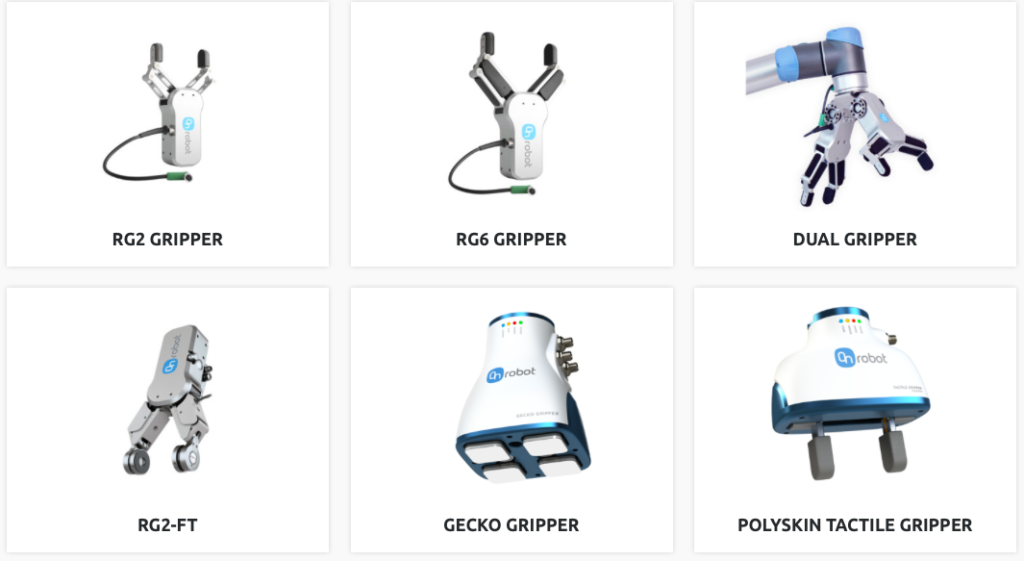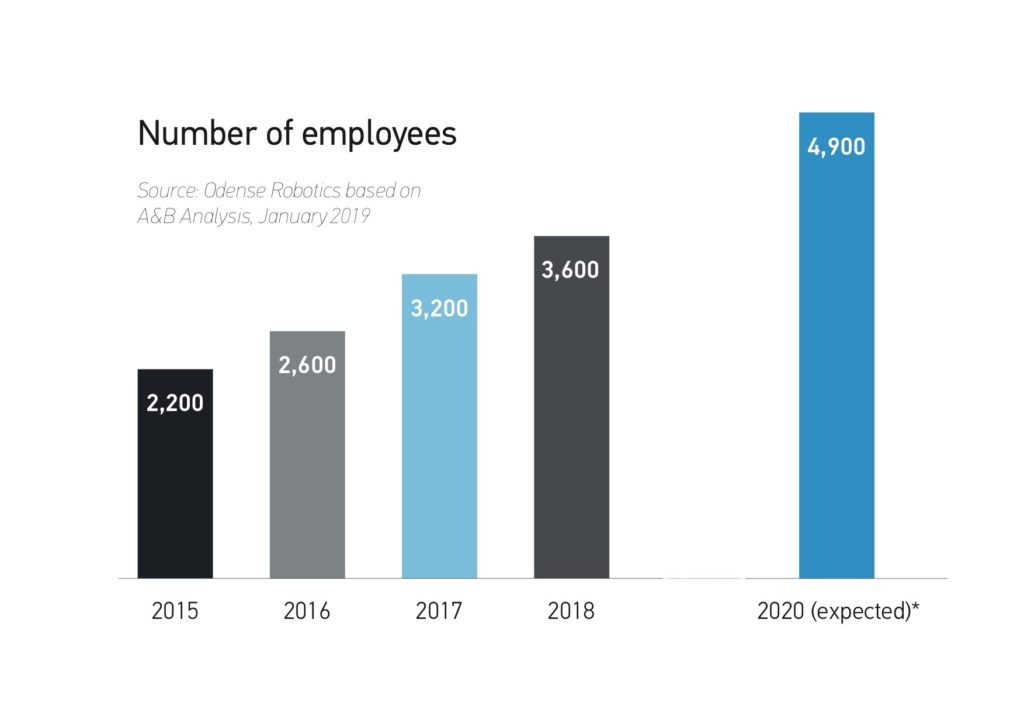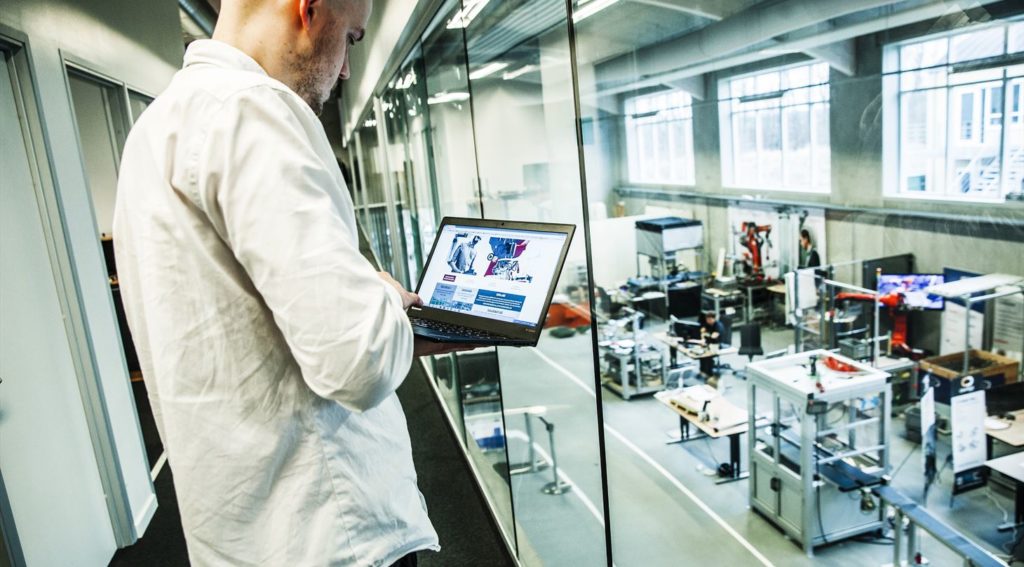
What makes a robotics cluster successful? Proximity to university research and talent, government support of entrepreneurship, and a focus on industry end users are all important. Around the world, regions have proclaimed initiatives to become “the next Silicon Valley.” However, there have been relatively few metrics to describe robotics hubs — until now.
This week, Odense Robotics in Denmark released a report on the economic returns generated by its member companies. Both the amount of exports and the number of employees have increased by about 50 percent, according to Mikkel Christoffersen, business manager at Odense Robotics.
At the same time, the report is realistic about the ongoing challenges facing every robotics cluster, including finding qualified job candidates. As locales from India to Israel and Canada to China look to stimulate innovation, they should look at their own mixes of people, partnerships, and economic performance.
Membership and money
The Odense robotics cluster currently has 129 member companies and more than 10 research and educational institutions. That’s up from 85 in 2015 and comparable with Massachusetts, which is home to more than 150 robotics companies. The Massachusetts Robotics Cluster said it had 122 members as of 2016.
Silicon Valley Robotics says it has supported 325 robot startups, and “Roboburgh” in Pittsburgh includes more than 50 organizations..
In terms of economic performance, the Odense robotics cluster had 763 million euros ($866.3 million U.S.) in turnover, or revenue, in 2017. It expects another 20 percent increase by 2021.
Odense has been friendly to startups, with 64 founded since 2010. The Odense Robotics StartUp Hub has helped to launch 15 companies. Seventy companies, or 54 percent, of those in the Odense area have fewer than 10 employees.
Total investments in the Danish robotics cluster have risen from 322 million euros ($365.6 million) in 2015 to 750 million euros ($851.7 million) last year, with 42 percent coming from investors rather than public funding or loans.

Source: Odense Robotics
In addition, 71 local companies were robotics producers, up from 58 in 2017. The next largest category was integrators at 23. The region also boasted 509 million euros ($577.9 million) in exports in 2017, and 66 percent of its members expect to begin exports.
Market focus
The Odense Robotics report notes that a third of its member companies work with collaborative and mobile robots, representing its focus on manufacturing and supply chain customers. Those are both areas of especially rapid growth in the wider robotics ecosystem.
The global collaborative robotics market will experience a compound annual growth rate (CAGR) of 49.8 percent between 2016 and 2025, compared with a CAGR of 12.1 percent for industrial robots, predicts ABI Research. Demand from small and midsize enterprises will lead revenues to exceed $1.23 billion in 2025, said ABI.
Odense-based Universal Robots A/S is the global market leader in cobot arms. Odense-based gripper maker OnRobot A/S was formed last year by the merger of three companies, and it has since acquired Purple Robotics and raised hundreds of millions in additional funding.

OnRobot’s lineup of robotic grippers. Source: OnRobot
Similarly, the market for autonomous mobile robots will have a 24 percent CAGR between 2018 and 2022, according to a Technavio forecast. Odense-based Mobile Industrial Robots ApS (MiR) has tripled its sales in each of the past two years.
Both Universal Robots and MiR have broadened their international reach, thanks to ownership by Teradyne Inc. in North Reading, Mass.
Robotics cluster must address talent shortage
Odense Robotics said that its robotics cluster employs 3,600 people today and expects that figure to rise to 4,900 by next year. In comparison, the Massachusetts robotics cluster employed about 4,700 people in 2016.

The Danish robotics cluster is a significant employer. Source: Odense Robotics
Even as the numbers of people grow at larger robotics companies (with 50 or more employees) or abroad, businesses in southern Denmark have to look far afield to meet their staffing needs. More than a third, or 39 percent, said they expect to hire from outside of Denmark, and 78 percent said that finding qualified recruits is the biggest barrier to growth.
The average age of employees in the Odense robotics cluster reflects experience, as well as difficulty recruiting. Fifty-five percent of them are age 40 to 60, while only 18 percent are under 30.
This reflects a larger problem for robotics developers and vendors. Even with STEM (science, technology, engineering, and mathematics) programs and attention paid to education, the demand for hardware and software engineers worldwide outstrips the available pool.
The University of Southern Denmark (SDU) is working to address this. It has increased admissions for its bachelor’s degrees in engineering and science and master’s of science programs from 930 in 2015 to 1,235 last year. The university also launched a bachelor’s in engineering for robot systems, admitting 150 students since 2017.

The Danish Technological Institute is expanding its facilities in Odense this year. Source: DTI
Another positive development that other robotics clusters can learn from Odense is that 41 percent of workers at robotics firms there went to vocational schools rather than universities.
Partnerships and prospects
Close collaboration with research institutions, fellow robotics cluster members, and international companies has helped the Odense hub grow. Seventy eight percent of cluster members collaborate among themselves, according to the report. Also, 38 percent collaborate with more than 10 companies.
The Odense robotics cluster grew out of a partnership between shipping giant Maersk A/S and SDU. The Maersk Mc-Kinney Moller Institute at SDU continues to conduct research into robotics, artificial intelligence, and systems for healthcare and the energy industry. It recently added aerial drones, soft robotics, and virtual reality to its portfolio.
Last year, the institute invested 13.4 million euros ($15.22 million) in an Industry 4.0 laboratory, and an SDU team won in the industrial robot category at the World Robot Summit Challenge in Japan.
Examples such as Universal Robots and MiR, as well as Denmark’s central position in Northern Europe, are encouraging companies to look for partners. Collaborating with companies inside and outside the Odense robotics cluster is a top priority of members, with 98 percent planning to make it a strategic focus in the next three years.
Of course, the big opportunity and competitive challenge is China, which is potentially a much bigger market than the U.S. or Europe and is trying to build up its own base of more than 800 robotics companies.
It’s only through collective action around robotics clusters that smart regions, large and small, can find their niches, build talent, and maximize the returns on their investments.
Editor’s note: A panel at the Robotics Summit & Expo in Boston on June 5 and 6, 2019, will feature speakers from different robotics clusters. Register now to attend.
The post Robotics cluster in Odense, Denmark, offers metrics for growth appeared first on The Robot Report.